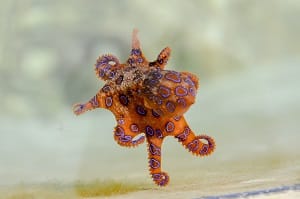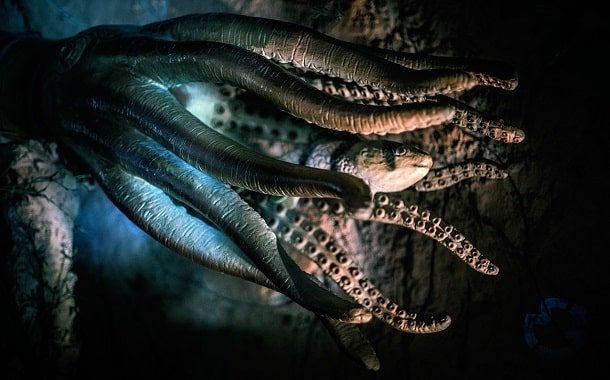How Much Does an Octopus Cost?
Last Updated on December 28, 2023
Written by CPA Alec Pow | Content Reviewed by ![]() CFA Alexander Popinker
CFA Alexander Popinker
There are currently 300 known octopus species all around the world, and all 300 of them are known to be venomous, except for one group, known as the blue-ringed octopus. Octopuses can be found in most parts of the ocean, as well as in different parts of the coral reef. People are split between keeping the octopus as a pet and treating it as a delicacy.
How Much Does an Octopus Cost?
The cost of an octopus is somewhere between just $20 and $1,000 or even more, although most purchases will just fall between $30 and $100. You are likely to pay more the larger the creature is. The average price of the octopus will also depend on the species, as well as other factors such as the breeder you purchase the octopus from, the specimen’s age, quality, and where you live.
One example is the popular Atlantic pygmy octopus with a price range between $50 and $80. The average pet octopus will usually range between a few inches and a few feet, as octopuses designed for aquariums are smaller than those you find in the ocean.
You might also like our articles about the cost of a penguin, a tarantula, or an iguana.
Some people want to own blue-ringed octopuses as their pets, although this particular species is considered illegal to own. This is still debatable, as you are allowed to bring this species to the United States as a commercial importer if you have the needed collecting permits.
This type of octopus is rather hard to find but if you get your hands on one, be prepared to spend several hundred dollars to own it.
This isn’t a choice for owners, though, since it carries a venom known to be very dangerous. With no antidote available, it could be a deadly situation.
For example, a farm-raised octopus Bimaculoide can cost anywhere between $30 and $60. The eggs of such a creature will cost $10 to $110.
Types of octopus
Common
The “common octopus” is known among scientists as the Octopus vulgaris. This is a species that is usually found in the shallow parts of tropical waters. It is known for its impressive camouflage skills, as it can become almost invisible in your tank, using its specialized pigmented cells to match its surroundings almost perfectly. This octopus can grow to 24 – 36 inches long.
Atlantic Pygmy
With a weight of just around an ounce and a size of just under five inches, this is known as the smallest pet octopus species in the world. Aside from being very playful, this species is also very intelligent and is able to solve a lot of problems. It needs a smaller tank compared to other species due to its small size.
The downside to owning this breed is that it is known as a picky eater and will hide most of the day, according to most owners. And hiding is pretty easy considering that they change their colors just like a chameleon.
When you go for this particular species, you should make sure you give it enough privacy by adding a lot of hiding spots in your aquarium.
Caribbean Reef:
This is a green, red, or brownish octopus that will eat very early in the morning. It usually feeds on crustaceans and can reach 22 inches in size. It is mostly found in the Florida Keys.
Californian Two-Spot
The Californian Two-Spot is usually known as the “bimac”. Although the arms of this octopus can extend close to 25 inches long, the octopus itself will be seven inches in size. Considering its size, you will have to get a larger tank to accommodate it. One of at least 50 gallons should do. It is a very friendly species that likes to play with toys like Lego blocks and loves to eat scallops, crabs, and shrimp.
Red
You can find this duller red octopus in the eastern parts of the Pacific Ocean. This octopus won’t need a heated tank as it prefers cooler waters that are around 60 degrees Fahrenheit. It is one of the most common types of pet octopuses to keep in an aquarium.
Additional costs related to keeping a pet octopus

Compared to other aquatic creatures you might want to raise at home, an octopus will usually need a lot more care. According to experts, the octopus is more likely to survive the bigger your aquarium is. The suggested tank size will differ based on the species you’re getting, but a 70-gallon one is usually enough. Expect to pay at least $300 for an aquarium this big. Most species of octopus will require a water temperature of around 70 degrees Fahrenheit to have a happy life.
Considering that octopuses are smart enough to escape most tanks, you should have your tank “octopus-proofed”. If not, the creature will likely crawl out. The octopus lives in salt water, which makes the tank more expensive than your average freshwater tank. The tank should also have other accessories, like filters, lighting, rocks, sand, and a pump.
As for the diet of an octopus, you should feed it a combination of live food made like shrimp, crustaceans, chopped seafood, and fresh fish. Most octopus owners say that they spend around $100 per month on food alone, as scallops, crabs, and shrimp can get pretty expensive pretty fast. A healthy octopus should eat at least once every two days.
Octopuses like to play all kinds of games, enjoy having fun with baby toys, sorting through shells, and also play tug of war. Some owners have also tried to place a loosely closed jar in the tank and then watched their octopus open it to get to the items inside.
It will be a lot easier to find an octopus through an online breeder, as most local pet stores don’t have these creatures for sale. Keep in mind that most online stores will charge a shipping fee. This fee will depend not only on the particular breeder and the size of the pet but also on the distance from his location to yours. Expect a shipping fee of anywhere between $40 and $75.
Test kits, a hydrometer, and other tank testing equipment are also recommended so that you can check the water for salt concentration and make the needed adjustments as soon as possible.
Important things to consider
Expect your octopus to live somewhere between just five months and six years, depending on its species. In a properly set up aquarium, a Bimac, for example, can easily live for two years. Larger common octopuses will live even longer, reaching ages of three to five years, while dwarf octopuses will only live for up to eight months.
The octopus is known to refuse to eat and even start eating its own arms if it is stressed or doesn’t like its environment.
It’s a known fact that the octopus is intelligent enough to be able to escape your average tank if it isn’t properly secured and octopus-proof. Some specimens have been able to live for several hours after escaping, and some of them even managed to find other aquariums in which to hunt prey. An octopus that has a white or lighter color than usual might be ill. This is usually due to an improperly set up aquarium.
Although an octopus might try to bite you, it won’t be out of spite. Instead, it will check to see whether it can eat you or not. According to people that have been bitten, its bite is comparable to a bee sting.
How can I save money?
Before making your purchase, read up on the newest threads on forums like Tonmo.com and talk to some breeders to see where you might find the best octopus prices.



Leave a Reply
Want to join the discussion?Feel free to contribute!